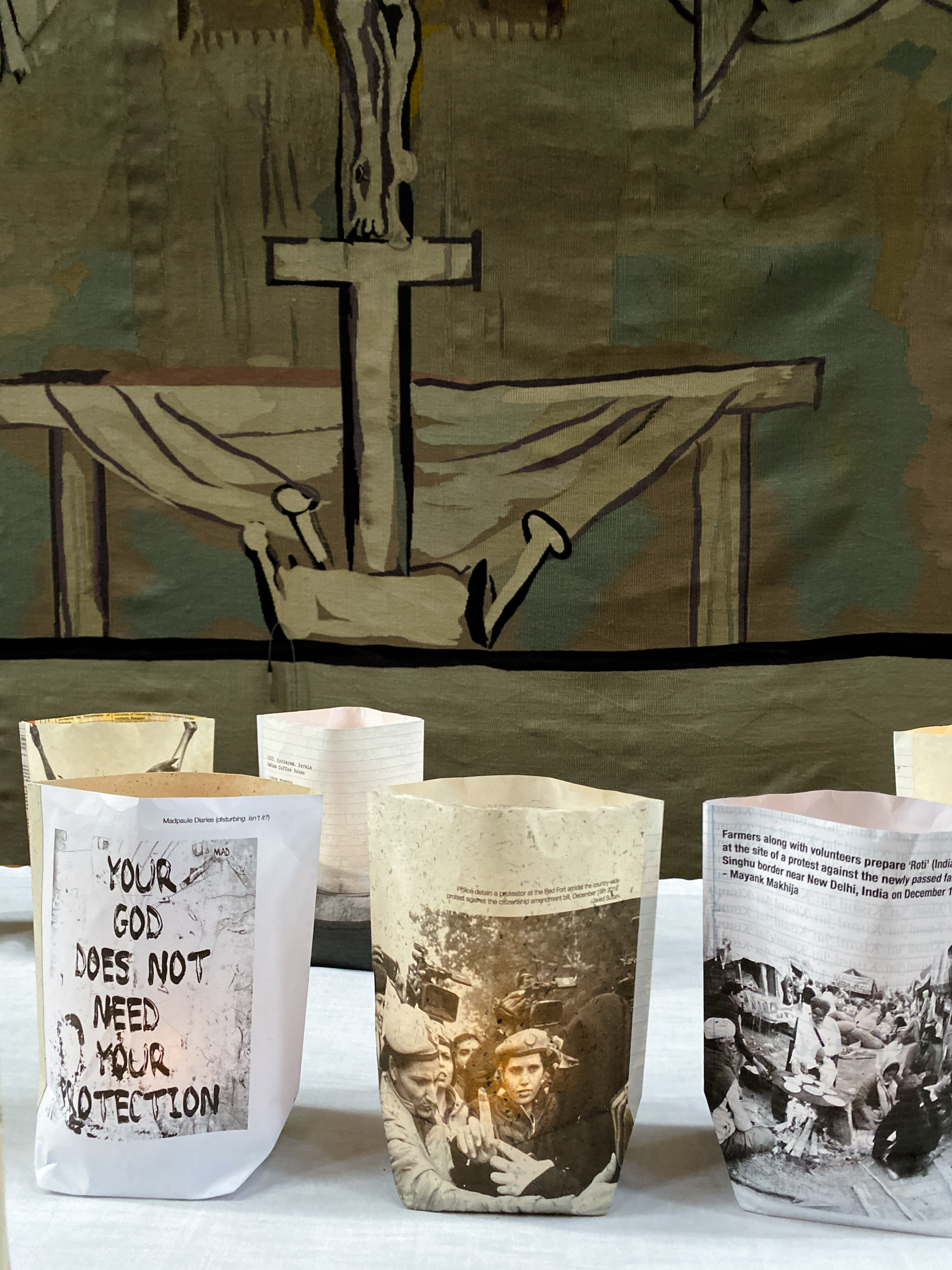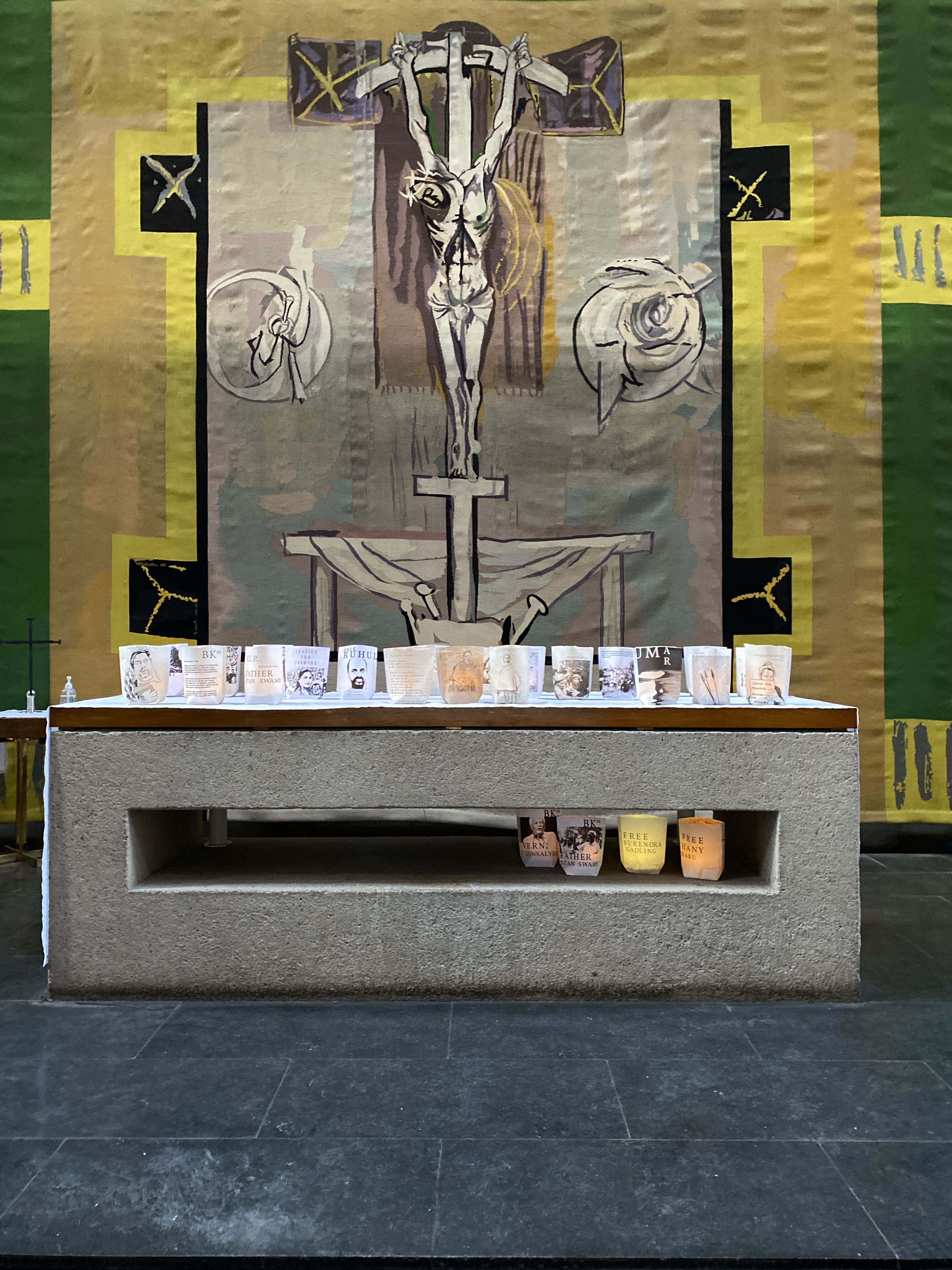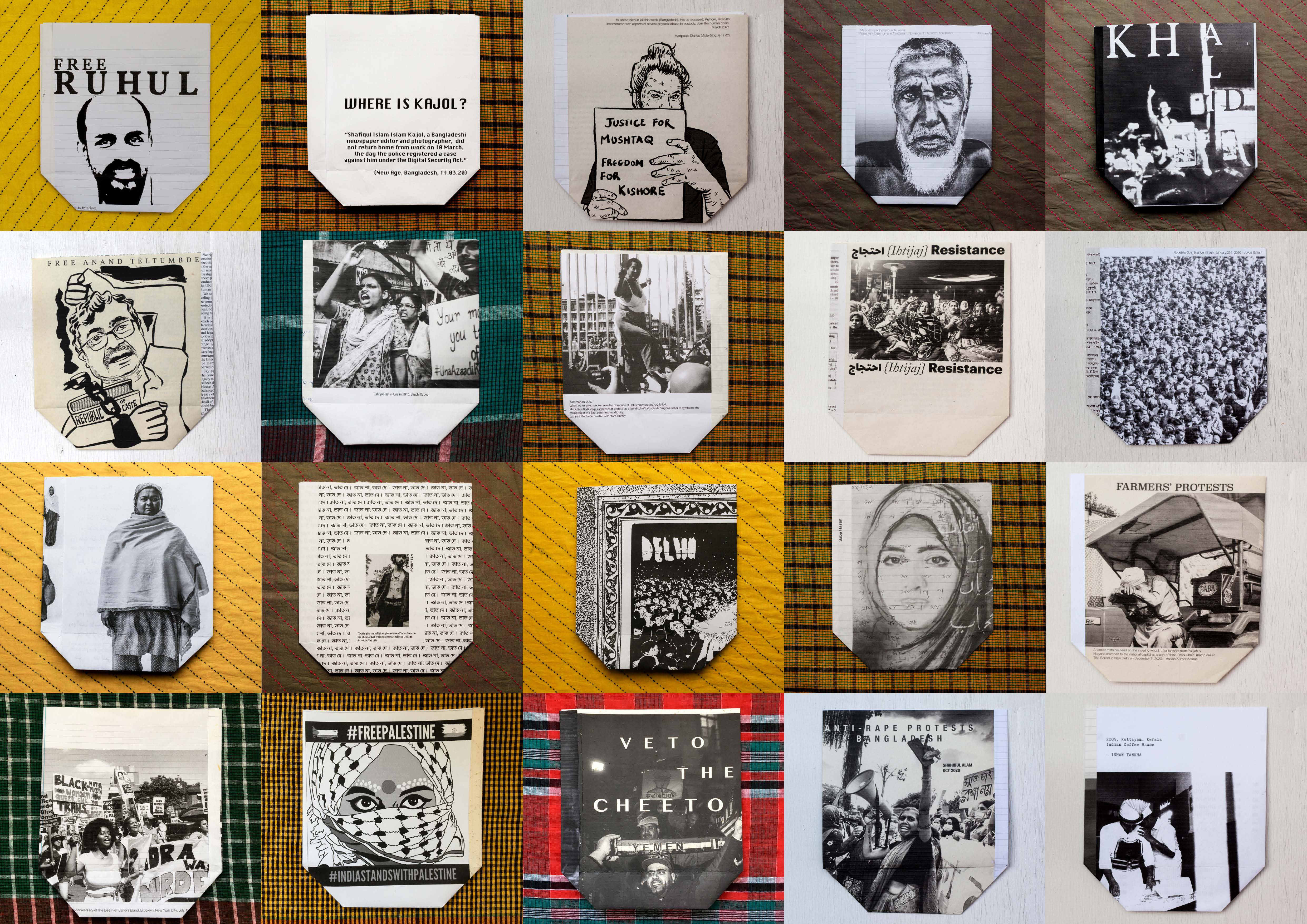All images © Sofia Karim
Photography’s rules are made to be broken. Having become frustrated with the medium’s conventions, five artists discuss how sculpture, activism and X-rays keep photography alive in their work. Next up is Sofia Karim
Sofia Karim has been a practising architect for almost two decades, turning to art and activism following the incarceration of her uncle, Shahidul Alam, in 2018. Turbine Bagh, the artist movement she founded in support of India’s Shaheen Bagh protests against authoritarianism, saw her nominated for the 2021 Jameel Prize
I’ve been an architect for 19 years. A few months after I went freelance, in 2018, my uncle, [the photographer] Shahidul Alam, was detained by the government of Bangladesh. From then on, I was campaigning full-time and the way I understood space began to shift in a weird way. In the day, I’d be campaigning for him, and at night, I began to dream of spaces I’d never seen before. Shahidul had just been tortured under interrogation; we didn’t know that much about his circumstances in jail. I began to see these really strange shapes in my mind. They’d expand and contract; they were emotion and colour.

I started writing my theories, which I call An Architecture of Disappearance. This is a body of work in many manifestations. My work is rooted in the language of architecture, because it’s the only language I really know. My medium still isn’t photography, though I’ve worked with many photographers. Part of campaigning for Shahidul was to engage the arts community. That’s when I first began to be connected with his international photography network. They were amazing, holding protests for Shahidul in Mexico, then Peru, India and Argentina.
One hundred and seven days later, he was released. By then I was an activist (though I find it a clumsy term). I was working with South Asia Solidarity Group, a UK-based anti-imperialist, anti-racist activist group, when the Shaheen Bagh protests broke out in India. While Shahidul had been in jail, I’d run a Free Shahidul installation at the Turbine Hall in Tate Modern, where we showed his Crossfire photos of extrajudicial killings in Bangladesh. That had happened spontaneously, thanks to the artist Tania Bruguera.
When the Shaheen Bagh protests broke out [in 2019], I thought, ‘Let’s try and do something in the Turbine Hall again’. We need to use these spaces in different ways, not just curators planning long-term projects and deciding which artists get to use the space. I planned this whole protest that was going to happen with artists, musicians and activists. Many of these themes are relevant to artists beyond just India and Bangladesh: fascism, authoritarianism, ethnonationalism.

I’m not sure of the alchemy behind why the packets artwork have been so popular. I found the first packet on the streets of Dhaka in February 2018, before my uncle was in jail. I was with my mum and I was hungry, so I bought some samosa on the street. I noticed that the packet was made from court lists of cases of the state against citizens. There were so many thousands of these cases in authoritarian regimes that they were now appearing on throwaway food packets. Food was very important during the Shaheen Bagh movement; it is said that even the policemen loved the food there. The greeting wouldn’t be ‘How are you?’ – but ‘Have you eaten?’.
I printed the images on throwaway paper from my mum’s house. Then we were going to fill them with rice and display them in this circle in Tate Modern. Two days before the protests happened, the Tate had to shut for the Covid-19 lockdown, and the Shaheen Bagh protests were shut down by the Indian government. But by then the Instagram platform was up and running. Soon we were campaigning for other political prisoners, and artists continued to send their work. Now these samosa packets are living their best life independent of me.
Nepal Picture Library and Photo Kathmandu were hugely supportive during the Free Shahidul movement. There was a memorable time when we were trying to raise Shahidul flags wherever prime minister Sheikh Hasina visited. I was then contacting local activists and asking them to send me pictures of the protests. That was my form of ‘curating’ the images. I’m by no means a curator in the traditional sense. One of my favourite packets is by Ishan Tankha. It’s not even overtly political. It depicts coffee houses in India, where you can sit and talk about politics. I found those really beautiful. Another is by Robert Gerhardt, who has been photographing Black Lives Matter since 2014 and also showing Muslim lives in America.
“My medium still isn’t photography, though I’ve worked with many photographers. Part of campaigning for Shahidul was to engage the arts community”
None of the artists had an issue with me printing images on a home inkjet printer. The preciousness of the print – and what the print is – seemed to disappear. When I served food in the packets, a couple of photographers then did have an issue with it and said, ‘I don’t think I want my work used in that way’, which was totally fine. I’m quite clear about how these are uncontrollable objects, and they will be reproduced and the print quality will be whatever it is.
In Arles this year, there was an exhibition by Editions JOJO where people made their own packets, and earlier this year the Herbert Art Gallery & Museum in Coventry did a workshop where kids and families were making samosa packets and cooking samosas. The V&A ‘acquired’ 20 packets, which we ended up donating rather than selling. They were never meant to be commercial objects, but it’s important that they’re in a permanent collection as a testimony of the struggle and the way artists have responded to it.


